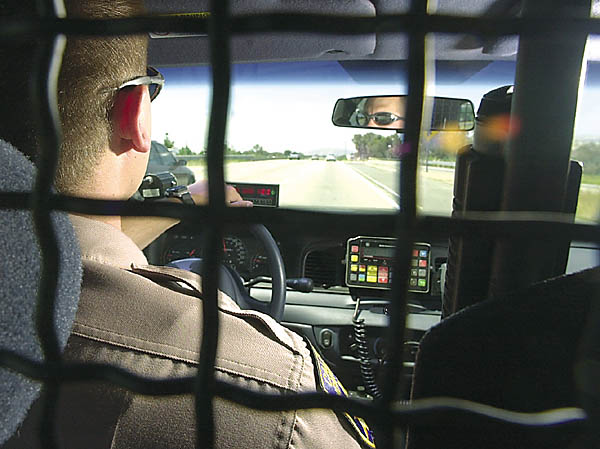
California Highway Patrol Officer Jason Workman did something
this week that for years had been nearly impossible
– he wrote a speeding ticket to a driver on southbound U.S. 101
north of Cochrane Road during the early-afternoon rush hour.
California Highway Patrol Officer Jason Workman did something this week that for years had been nearly impossible – he wrote a speeding ticket to a driver on southbound U.S. 101 north of Cochrane Road during the early-afternoon rush hour.
“Before the new lanes opened it was usually gridlock this time of day,” said Workman, who had just written a speeding ticket at 3:30 p.m. Wednesday to a man clocked at 88 mph in the 65-mph zone, a half-mile north of Cochrane Road. “It used to be that the only speeding tickets we wrote were at night or early in the morning, but not anymore.”
That’s why – with the expansion to four lanes 11 days ago of U.S. 101 between Cochrane and the Highway 85 interchange in south San Jose – the CHP is continuing to work overtime to send a message to regional commuters: “Slow down. We’re watching you.”
Since the new lanes of U.S. 101 officially opened May 19, the CHP has written an average of more than 14 speeding tickets per day to heavy-footed drivers commuting the 23 miles between Gilroy and Blossom Hill Road in San Jose.
Before the recent shattering of the infamous 10-mile bottleneck between Cochrane Road and Highway 85, the CHP handed out an average of fewer than eight speeding tickets per day along that same stretch of highway, according to CHP spokesperson Terry Mayes.
“We’ve made it a priority to reduce and enforce speeds with the opening of the new lanes,” Mayes said. “People have been frustrated with this slow commute for years and now they want to make up for it, but we want to get it in people’s heads right now that this isn’t a speedway.”
In an effort to deter speeding along the new stretch of freeway, the CHP is utilizing the expanded patrols allocated to comply with the federal terror alert status that was elevated to “orange” May 21.
Since the federal mandate that same day that required local CHP officers to lengthen their normal 8 1/2-hour shifts to 12-hour overlapping shifts, the CHP has kept at least four cars patrolling U.S. 101 between Gilroy and San Jose at all times, along with an additional four to six officers on patrol. The federal government is paying the bill for the overtime.
“Our goal is to be as visible as possible,” Mayes said. “The (federal terror alert) overtime has given us the resources to enforce this area with a large number of officers.”
But not everyone was getting the message.
Resting in his cruiser on the southbound shoulder of U.S. 101 north of Cochrane Road – where the speed limit is 65 mph – Workman’s radar regularly recorded speeds into the high 70-mph range. When the radar rolled to 88 mph, Workman turned on his lights and hit the gas pedal.
Less than a mile toward Cochrane Road, Workman caught up with the silver Toyota Corolla he clocked at 23 mph above the speed limit, and he pulled over the driver.
Ten minutes later, the driver of the Corolla was rolling again, but at a much slower pace – with a ticket costing between $40 and $200 and a possible increase in his insurance premium.
“He said he was on his way home,” Workman said. “He was probably trying to get there a bit quicker. … Now he’s out some money and some more time.”
Mayes said one of the main goals in enforcing the speed limit is to reduce the number of severe crashes expected to come with the increased speed on U.S. 101.
Although the number of accidents on south Santa Clara County’s 23-mile stretch of the highway is expected to decrease with the decline in traffic congestion, the accidents that do occur will be more deadly, Mayes said.
With 7,700 cars per hour driving on U.S. 101 past Cochrane Road at peak drive times, the CHP will continue to maintain a tight grip on speeders in the area.
“If we don’t control this area now, it could get pretty ugly,” Mayes said. “What we’re doing now is trying to set the tone for speeders: If you speed, you’ll pay.”









